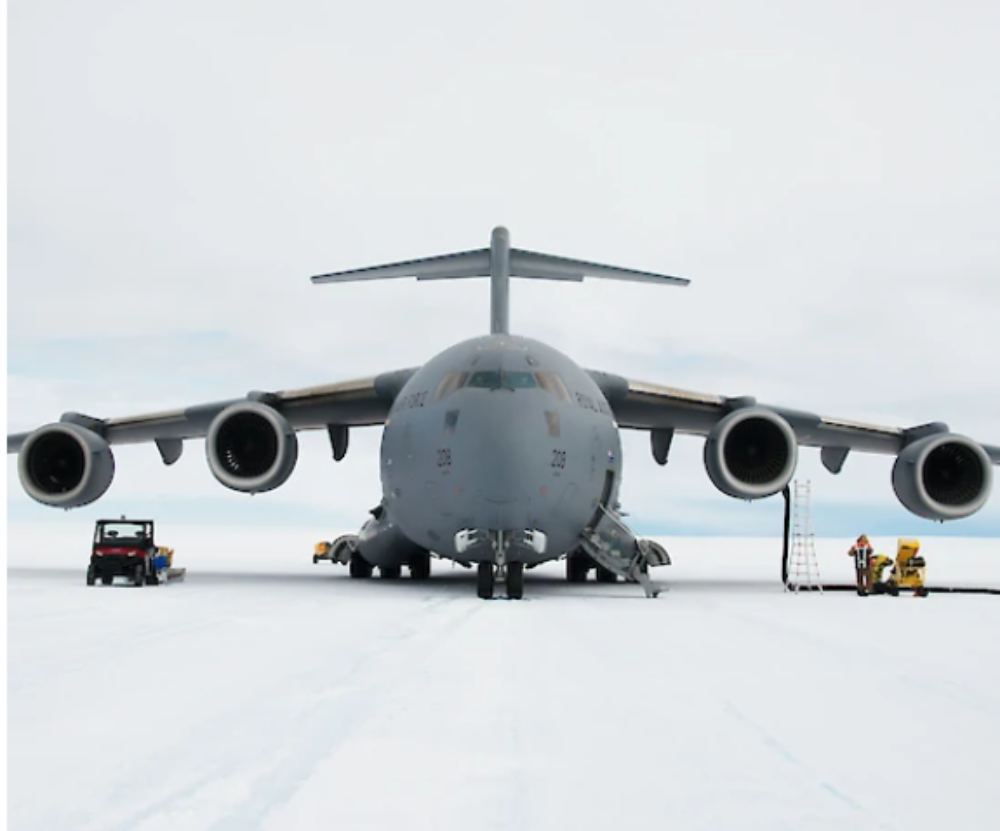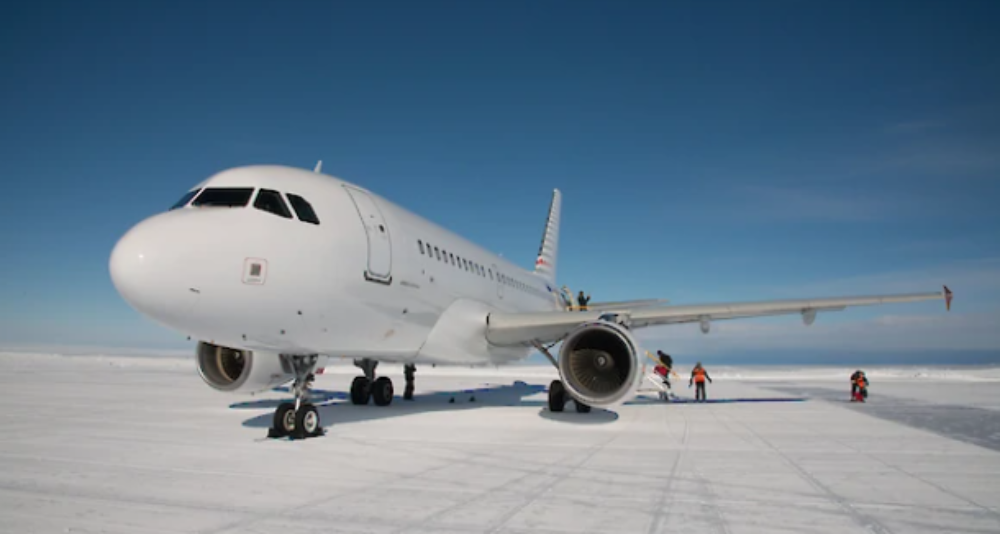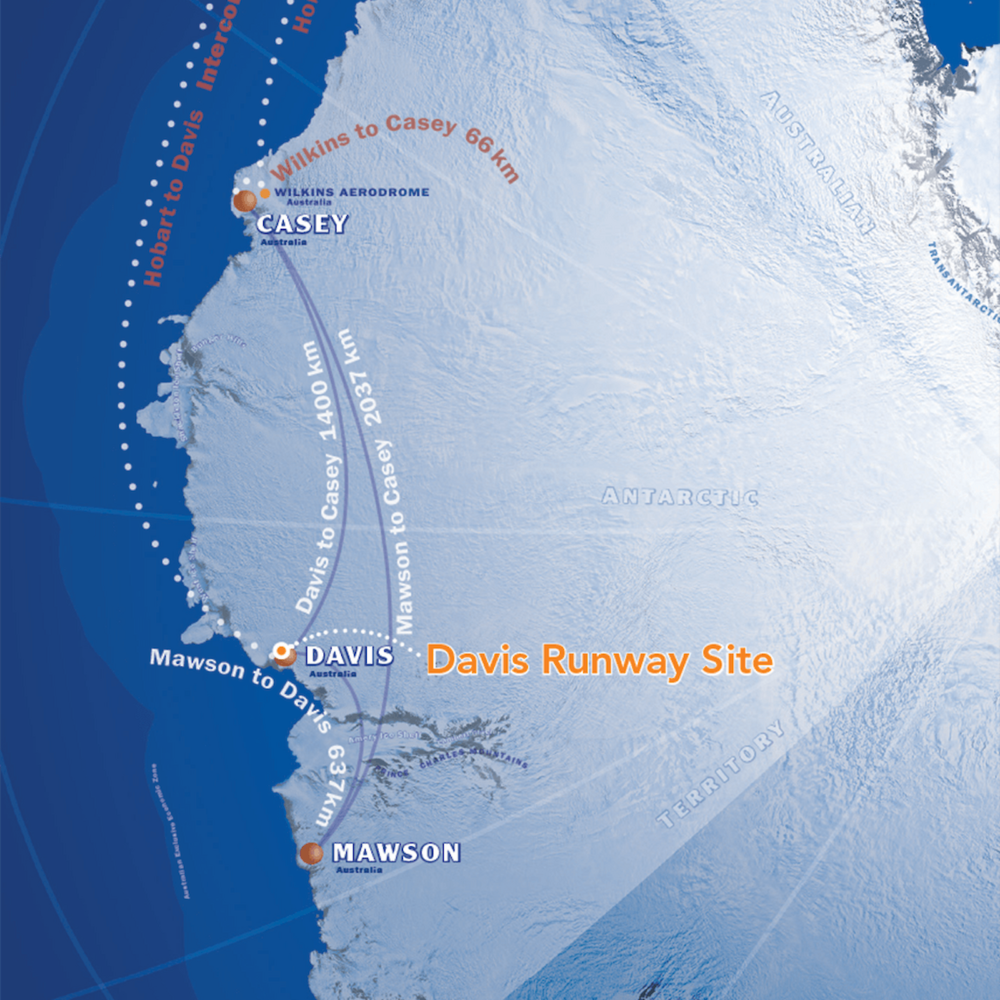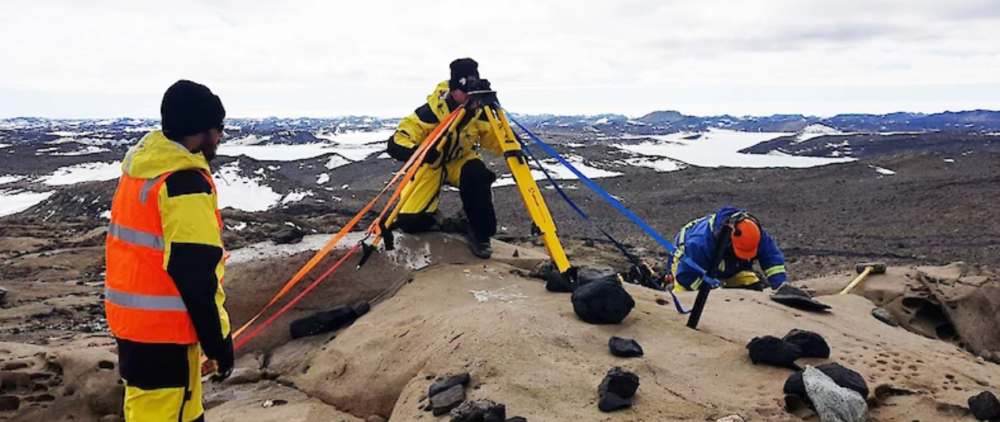The Australian government is seeking expressions of interest for the construction of a 2,700-meter paved runway near Australia’s Davis research station in East Antarctica. The runway would support year-round air access between Hobart and Antarctica. However, the costly and ambitious plan to build the first paved runway in Antarctica is receiving some critical blowback.
Currently, air access to Antarctica is limited
Australia claims about eight million square kilometers (or about 42%) of Antarctica and a 200-mile nautical zone. Australia's primary staging post for trips south is Hobart, capital of Tasmania. Over some of the Antarctica summer, planes can access a three-and-a-half kilometer glacial runway at Australia’s Wilkins Aerodrome, 70 kilometers from Casey station. There's also a smaller two-kilometer ski-way able to handle Twin Otter and Basler aircraft near Davis Station.
Over the summer, the Wilkins Aerodrome runway sees Airbus A319 aircraft operated by Skytraders and the odd Royal Australian Air Force C-17A. But these runways are only operational at the beginning and end of the summer months. Australia wants year-round reliable access to Antarctica to facilitate better research and be able to respond to emergencies.
"The construction of a paved runway at Davis research station would represent a significant capability boost that would revolutionize our scientific activities and enhance Australia’s leadership and long-term interests in the region," says the Australian Antarctic Division's website.
A multi-billion project that will take well over a decade to construct
Right now, the Australian government is formally seeking expressions of interest to help build the multi-billion dollar runway. The runway will take decades to construct. The proposed build will include a 2,700-meter paved runway capable of handling Boeing 787 Dreamliners or an Airbus A330. There will also be related infrastructure including a taxiway, aircraft apron, runway lighting, and associated buildings to accommodate services, such as air traffic and rescue and fire fighting services. Thrown into the deal is a new wharf and access road to Davis Station.
What's the motivation behind the Antarctic runway?
Unsurprisingly, not everyone is enthusiastic about the plan. The University of Tasmania is one of the world's leading Antarctic research institutions. In a paper published in mid-2020, researchers Shaun Brooks and Dr Julia Jabour argued Australia's motivation to build the paved runway was primarily geo-political.
"Influence in Antarctica has traditionally corresponded to the strength of a nation’s scientific program, its infrastructure presence, and engagement in international decision-making.
"Australia is a well-regarded member of the Antarctic Treaty. It was an original signatory.
"It also has a solid physical and scientific presence, maintaining three large year-round research stations. But other nations are also vying for influence. China is constructing its fifth research station."
Significant environmental concerns
In addition to the cost, opponents to the runway point out the environmental damage the construction will cause. The Australian government and its offshoot, the Australian Antarctic Division, proposed the location because it is a coastal ice-free area with favorable geotechnical characteristics. The proposed runway is around five kilometers from Davis research station, the climate is relatively mild and benign, and the weather is reasonably predictable.
The University of Tasmania researchers say Wilson’s storm petrels, Adélie penguins, and Weddell seals breed close to the proposed runway.
"Construction will require more than three million cubic meters of earthworks - leveling 60 vertical meters of hills and valleys along the length of the runway."
They argue construction has the potential for significant dust emissions and the effect of this on the surrounding environment is poorly understood. Ironically, the Australian Antarctic Division argues year-round access will improve research. That will better-allowing scientists to understand the impact of human beings and their infrastructure on a relatively pristine environment.
One thing is for sure, the Australian Government is keen to push ahead with this project. As it gathers momentum, it will become increasingly controversial.
What's your opinion? Should Antarctica get a paved runway? Post a comment and let us know.




